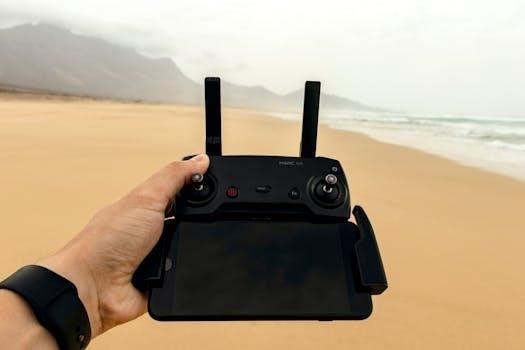
Pioneer VSX-522 Manual Overview
The Pioneer VSX-522-K is an entry-level 5.1 channel receiver, ideal for modest home theaters, offering 80 watts per channel and four HDMI inputs, supporting 3D and HD audio formats. It’s a great value.
The Pioneer VSX-522-K stands as a foundational piece for any budding home theater enthusiast, offering a blend of performance and value. This 5.1-channel A/V receiver is designed to be user-friendly, making it accessible to both beginners and seasoned audiophiles alike. It’s positioned as an entry-level model, but it doesn’t skimp on essential features. Boasting 80 watts per channel, the VSX-522-K provides sufficient power to drive a standard surround sound setup, allowing for immersive audio experiences in a typical living room environment. One of its notable attributes is its compatibility with various digital devices, including iPods and iPhones, thus bridging the gap between traditional home theater systems and modern portable devices. Moreover, the VSX-522-K is 3D-ready, meaning it can handle 3D video signals from Blu-ray players, broadcasting, and video games, ensuring that users can enjoy the latest visual content with ease. It also supports Deep Color, x.v. Color, and Audio Return Channel, enhancing the overall viewing and listening experience. This receiver is designed to accommodate both legacy equipment and modern high-definition sources, making it a versatile addition to any home entertainment setup.
Key Features of the VSX-522-K
The Pioneer VSX-522-K boasts a range of key features that make it a compelling option for a home theater setup. At its core, this receiver delivers 80 watts of power per channel across its 5.1 configuration, ensuring ample audio output for most home environments. It includes four HDMI inputs, providing sufficient connectivity for multiple high-definition devices, such as Blu-ray players, gaming consoles, and streaming devices. The VSX-522-K is also 3D-ready, enabling it to process and pass through 3D video signals, enhancing the viewing experience. Further, it supports Deep Color and x.v. Color, which contribute to richer and more vibrant visuals. The inclusion of Audio Return Channel (ARC) simplifies audio connectivity by allowing a single HDMI cable to transmit audio from the TV back to the receiver. For audio enthusiasts, the VSX-522-K supports Dolby TrueHD and DTS-HD Master Audio formats, ensuring high-fidelity sound reproduction. Legacy equipment is also considered, with extensive connectivity options available. The receiver also includes manual adjustments, including speaker size, crossover frequencies, channel levels, and speaker distance.

Manual Access and Availability
Pioneer VSX-522 manuals are readily available online, offering free access to operating instructions and specifications. These resources include PDF downloads for convenient offline viewing and reference.
Free Online Manuals for VSX-522
PDF Manual Downloads
For those who prefer offline access, the Pioneer VSX-522 manual is readily available for download in PDF format. These PDF manuals offer the complete documentation of the receiver, allowing users to save a copy on their computers, tablets, or smartphones. Downloading the PDF manual ensures that you can always refer to the information, even without an internet connection. PDF files are easily searchable, making it convenient to quickly find specific sections or keywords. Additionally, PDF manuals retain the original formatting and layout, providing a consistent viewing experience across various devices. Multiple websites offer the VSX-522 manual as a free PDF download, often accompanied by options to download additional related documents, such as spec sheets. These downloads provide a comprehensive resource for understanding and operating the receiver. The PDF format also makes it easy to print specific pages or the entire manual, if desired, for physical reference.
Multilingual Support
Recognizing the diverse needs of its global user base, Pioneer provides the VSX-522 manual with multilingual support. While the primary manual is often available in English, efforts are made to accommodate users who speak other languages. This commitment ensures that a broader range of individuals can understand and utilize the features of the VSX-522 receiver effectively. Though finding manuals in specific languages other than English can sometimes be challenging, several sources may offer translations. Online platforms and forums may feature user-translated versions, or Pioneer may have released additional language manuals on its official website. Users are encouraged to explore these resources to locate a version of the manual in their preferred language. While not always comprehensive, this multilingual support highlights Pioneer’s dedication to serving its diverse customer base and promoting ease of use for all.

Setting up the VSX-522
Setting up the VSX-522 involves configuring speakers, connecting audio inputs, and establishing HDMI links. Proper setup ensures optimal sound quality and seamless integration with other devices.
Speaker Configuration and Settings
The Pioneer VSX-522 allows manual adjustments for speaker size, choosing between small or large, and crossover network frequencies, with options such as 50, 80, 100, 150, and 200Hz. Fine-tune channel levels using a test tone, and set speaker distances, ranging from 0.1 to 25.5, relative to your listening position. For optimal home theater, a 5.1 channel setup with front, center, surround speakers, and a subwoofer is recommended. Ensure the positive and negative terminals on the receiver match those on your speakers for secure connections. Access the receiver’s audio settings menu through the on-screen or front panel display to tailor parameters like bass, treble, and equalizer settings. This customization ensures a sound experience tailored to your preferences. Proper speaker configuration and settings are vital for achieving the best audio performance from your system. This allows you to set up your sound system in a way that is ideal for the room you are in.
Audio Connections and Inputs
The Pioneer VSX-522-K provides a range of audio connections including digital inputs. These connections are essential for integrating various audio devices with your home theater system. You’ll find a selection of ports for digital signals, accommodating modern devices. The receiver also offers multiple analog audio inputs, allowing connectivity with legacy equipment. These diverse audio connection options are crucial for a versatile setup. By properly using these inputs, you can easily manage audio from different sources. The receiver’s audio connections ensure compatibility with both older and newer devices. This means that you can connect your smartphone, gaming console, DVD player, and older equipment all to the same receiver. A proper understanding of audio connections is necessary for optimal performance. This ensures that your audio signals are transmitted correctly, which is essential for sound quality. With careful connection practices, you can maximize your receiver’s capabilities.
HDMI Connectivity and Setup
The Pioneer VSX-522-K features HDMI connectivity, supporting high-definition audio and video signals. The receiver includes four HDMI inputs, allowing seamless connections for devices like Blu-ray players and game consoles. Proper HDMI setup is crucial for optimal performance. Connecting a video source to the receiver’s HDMI input and then from the receiver’s HDMI out to your television ensures high-definition transmission. This setup supports 3D video, Deep Color, and x.v. Color. It’s important to use a high-quality HDMI cable for the best signal. The HDMI ports also support the Audio Return Channel feature. This simplifies audio routing from your TV back to the receiver; Properly configured, HDMI provides a single cable solution for both audio and video. This minimizes cable clutter. The HDMI setup of the VSX-522-K is essential for modern home theater systems, providing clean and efficient digital connections;

Troubleshooting the VSX-522
Addressing common issues with your Pioneer VSX-522 involves checking connections, verifying input selections, and resetting devices. These steps should resolve most of the typical audio or operational problems.
Common Issues and Solutions
Encountering problems with your Pioneer VSX-522 can be frustrating, but many issues have straightforward solutions. One common problem is the receiver not powering on. First, verify that the power cord is securely connected and the power outlet is functioning correctly. If the receiver still doesn’t turn on, consult the manual for specific reset procedures or contact a qualified technician. Another typical issue involves a lack of sound. Check all speaker connections to ensure they are firmly plugged in and that the speaker wires are correctly connected to the terminals. Verify the input source selection on the receiver; the correct input must be selected. If using external devices, ensure their audio settings and connections are also correct. If there is still no sound, power cycle the receiver along with all connected devices to reset the system. These initial steps often solve the majority of problems encountered. If problems persist, refer to the manual for further troubleshooting guides.
Audio Problems and Troubleshooting
When experiencing audio issues with your Pioneer VSX-522, several factors could be at play. If you’re using a wireless microphone and no sound comes out, first ensure the microphone is correctly connected to the designated input. Verify that the input source on the receiver is set to the correct channel, such as ‘sat/cable A’ or ’01’. Check the volume levels for that specific input and make sure it’s not muted. If problems persist, try a different audio source to determine if the issue is with the microphone or the receiver. If audio is distorted or skips, ensure that all connections are solid, and there are no loose wires. Additionally, check the receiver’s audio settings, such as Dolby Pro Logic or DTS, to see if any specific mode is causing issues. Resetting the receiver by powering it off and on may also resolve some audio glitches. If problems are not resolved, the manual offers further advice.

Additional Information
The Pioneer VSX-522 features Bluetooth connectivity for wireless audio streaming from various devices, supports HDMI for high-definition audio and video, and has information about potential hearing damage at high volumes.
Bluetooth Capabilities
While the Pioneer VSX-522-K receiver itself does not have built-in Bluetooth capabilities, it’s important to understand the general function of Bluetooth technology and how it can be used with external devices. Bluetooth is a universal method for wireless data exchange between electronic devices using radio waves, typically over a range of up to ten meters. This technology enables connections between devices like smartphones, tablets, and computers, allowing for wireless audio streaming. If you wish to use Bluetooth with your Pioneer VSX-522-K receiver, you will need to use an external Bluetooth adapter or receiver. Connect this adapter to one of the analog audio inputs on the VSX-522-K, which enables you to transmit audio wirelessly from your Bluetooth-enabled devices. Once connected, you can enjoy a versatile and user friendly audio experience through your receiver, enhancing your listening convenience. Remember to consult your external adapter’s manual for specific pairing instructions.
Understanding HDMI and Audio Signals
HDMI, which stands for High-Definition Multimedia Interface, is a crucial connection standard for modern audio and video equipment. An HDMI cable is used to transmit both audio and video signals between devices, such as Blu-ray players, gaming consoles, and televisions. The Pioneer VSX-522-K utilizes HDMI connectivity to ensure high-quality audio and video playback. It supports various audio formats, including Dolby Digital and DTS, to deliver an immersive sound experience. When setting up your system, remember that the HDMI connection from your video source should directly go into the receiver, and then from the receiver’s HDMI out to your TV. This setup allows the receiver to process and output both audio and video. Understanding the flow of these signals ensures optimal performance and seamless operation. Using high-quality HDMI cables is essential for maintaining signal integrity and preventing any loss of quality.